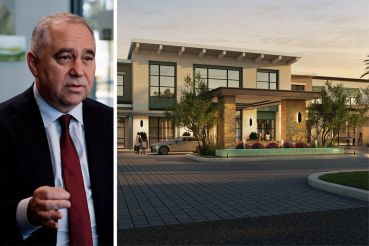Biden Proposes $425M to Reconfigure or Reduce Federal Real Estate Footprint
Funds in the latest budget would go toward consolidating and shedding space nationwide
By Nick Trombola March 13, 2024 1:52 pm
reprints
The Biden administration has built considerable momentum in reducing or renovating the federal government’s real estate portfolio in recent years — a trend it wants to accelerate.
The administration’s proposed budget for fiscal year 2025, released Monday, earmarks $425 million for the General Services Administration (GSA) to create a real estate “optimization program,” aimed at reconfiguring and revamping federal buildings as well as selling or ditching properties it no longer needs. As the federal government’s landlord for nonmilitary properties, the GSA owns or leases over 360 million square feet in more than 8,000 buildings across the country, including offices, courthouses and laboratories, per its own count.
In an effort to make the government’s portfolio more efficient and less costly, the GSA has jettisoned nearly 12 million square feet of owned space and 14 million square feet of leased space since 2013, according to September testimony from Nina Albert, the GSA’s public buildings service commissioner at the time. In November, the agency announced that it would further reduce its portfolio by 23 properties, together totaling some 3.5 million square feet and more than $1 billion in cost avoidance over the next 10 years.
Through the newly proposed optimization program, the GSA argues that taxpayers would ultimately be saved millions as the administration makes better use of federal space and avoids unnecessarily expensive leases. The program would also complement two other aspects of the proposed budget: guaranteeing that the GSA has complete access to revenues and collections in the Federal Buildings Fund (which bankrolls the public buildings service) and increasing the GSA’s prospectus threshold from $3.9 million to $10 million.
“These sound investments will yield big returns for taxpayers, from reducing real estate leasing costs to making smart, efficient use of technology across government,” GSA Administrator Robin Carnahan said in a statement regarding the budget.
The proposed budget also includes requests for funding for specific restoration and update projects in Washington, D.C., and Maryland, including at the Robert F. Kennedy, Orville Wright, Stewart Lee Udall and Robert C. Weaver federal buildings, the William Jefferson Clinton and Howard T. Markey National Courts complexes, and the Washington National Records Center.
“By making smart investments in our portfolio, this budget supports GSA’s work to rightsize and optimize the federal footprint in ways that advance the region’s economic development goals and save taxpayer dollars,” Melanie Gilbert, GSA’s acting regional administrator for the national capital region, said in a statement.
Although the rightsizing of the GSA portfolio is years in the making, it has exacerbated the already depressed office market in the District, which relies heavily on government tenants. In 2023, the federal government remained the largest lessor of space — comprising 38 percent of leasing volume — despite a net drop in demand of roughly 200,000 square feet, according to data from CBRE (CBRE).
Nick Trombola can be reached at NTrombola@commercialobserver.com.


